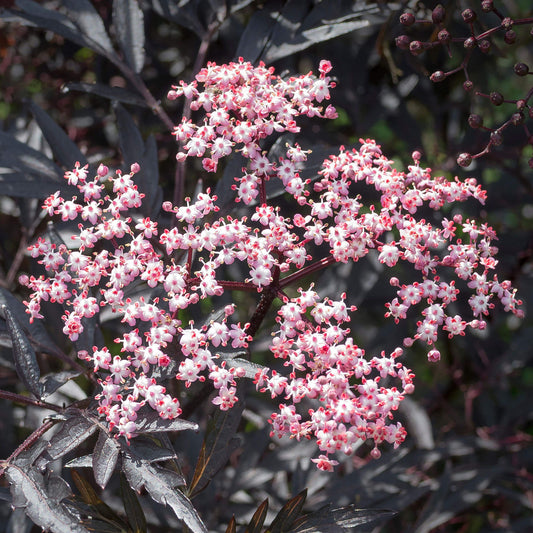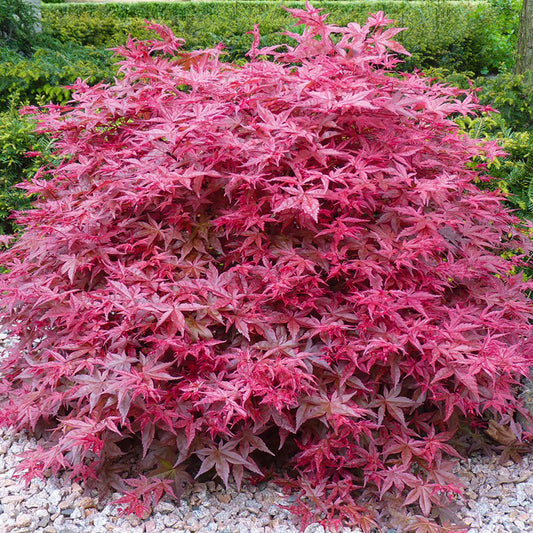Product description
The beautiful Prunus Amanogawa holds the Award of Garden Merit from the Royal Horticultural Society. The name comes the Japanese word meaning ‘Milky Way’ or ‘Heaven’s River’ which refers to the galaxy. This lovely narrow, column shaped tree is ideal for a small garden and will add interest all year round.
The main attraction are the dense clusters of fragrant, semi-double pale pink flowers that appear in April. They burst from the branches, creating an eye-catching display that will thrill. The flowers have a discreet, sweet scent, reminiscent of almonds, which makes this tree a delightful sensory addition to a garden. The flowers fade to almost white as they mature, ending with a purplish-pink heart before disappearing in the autumn. The spring foliage is a bronze green that turns to a deeper mid green in the summer. As autumn approaches, the leaves become a stunning red, fiery orange and bright yellow before falling.
Prunus 'Amanogawa' makes the perfect choice for city and suburban gardens as it is pollution tolerant. It is hardy and grows in most types of soil. For best results, plant in an area that receives full sun. Try to avoid very wet soils or shallow chalky areas.
The upright habit makes it perfect to plant as an ornamental tree or in a small group, creating a focal point in a garden. The Japanese Flowering Cherry also makes a great edging for lawns and can be used to line a garden pathway, walkway or larger avenues in public venues.
Plant specs, care guide & tips
Key features
Specifications
When to plant
| Jan | Feb | Mar | Apr | May | Jun | Jul | Aug | Sep | Oct | Nov | Dec |
|---|---|---|---|---|---|---|---|---|---|---|---|
Planting and period of interest times are general guidelines and may vary based on your location and conditions. For best results, consult local gardening resources.
Instructions
Top Tip
Prune your Prunus tree annually in midsummer to maintain its shape and remove any dead, damaged, or overcrowded branches. Avoid pruning during winter to minimise the risk of infection. For flowering varieties, prune immediately after blooming to encourage fresh growth and maximise next season's display. Regular maintenance will keep your tree healthy and looking its best year-round.
How to Water
Water your Prunus tree deeply after planting and consistently during its first growing season to help establish strong roots. Once established, the tree requires less frequent watering but should be watered during prolonged dry spells, especially in the summer months. Take care not to overwater, as Prunus trees dislike waterlogged conditions. Water early in the morning or late in the evening to minimise evaporation and ensure the roots can absorb the moisture effectively.
How to Plant
To plant a Prunus tree, choose a sunny or partially shaded position with fertile, well-draining soil. Dig a hole twice the width of the root ball and deep enough to accommodate it comfortably. Place the tree in the hole so that the root collar sits level with the soil surface, then backfill with a mixture of soil and organic matter, firming gently around the roots. Water thoroughly and apply a mulch layer around the base to retain moisture and suppress weeds, keeping the mulch a few centimetres away from the trunk to prevent rot. Stake young trees for added support in windy areas.






















